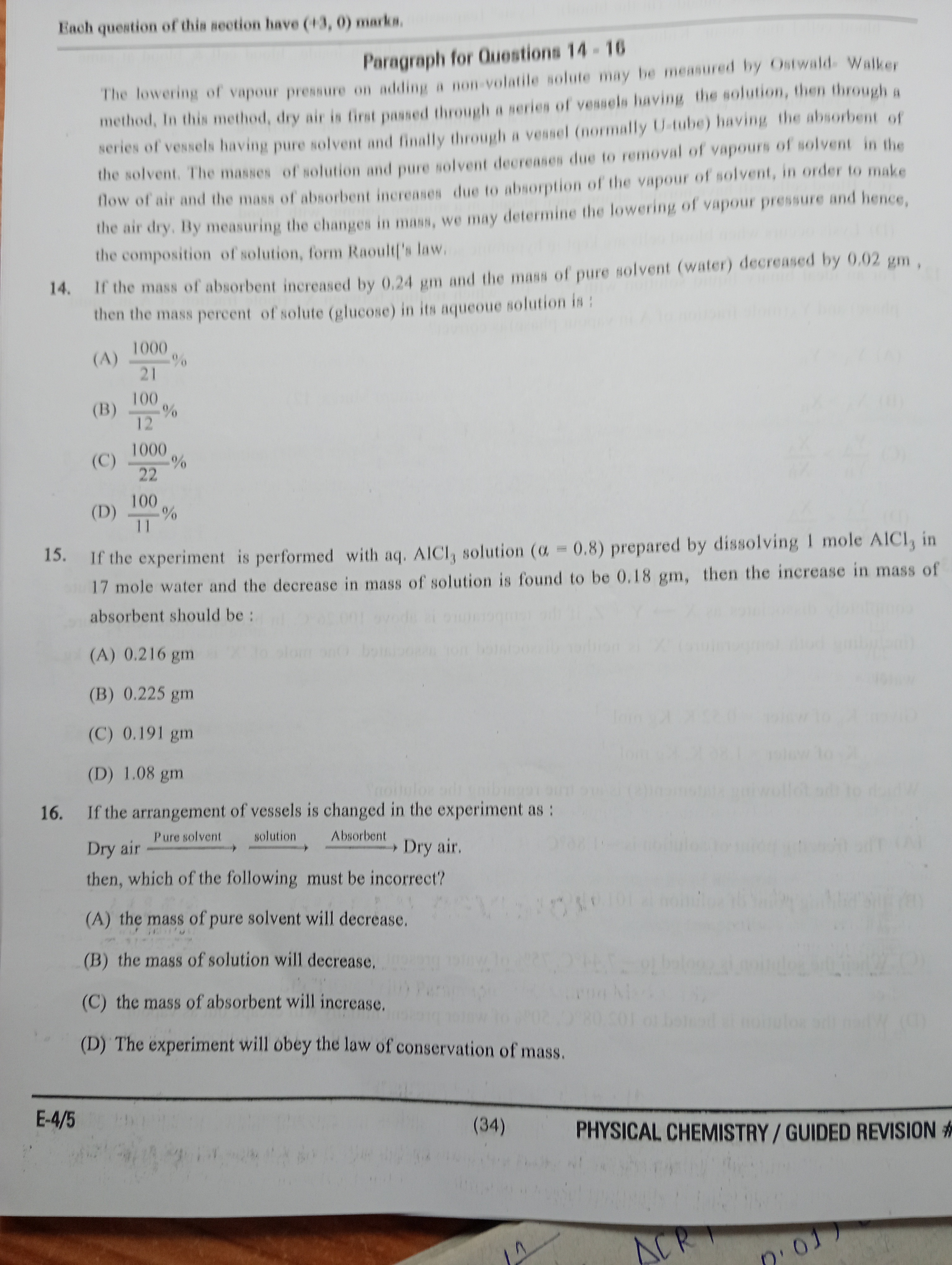Question
Question: If the mass of absorbent increased by 0.24 gm and the mass of pure solvent (water) decreased by 0.02...
If the mass of absorbent increased by 0.24 gm and the mass of pure solvent (water) decreased by 0.02 gm, then the mass percent of solute (glucose) in its aqueoue solution is:

211000%
12100%
221000%
11100%
211000%
Solution
In the Ostwald-Walker method, dry air is passed through the solution and then through the pure solvent. The decrease in mass of the solution vessels (ws) is proportional to the vapor pressure of the solution (Ps), and the decrease in mass of the pure solvent vessels (wp) is proportional to the lowering of vapor pressure (P0−Ps). The increase in mass of the absorbent is the total mass of solvent vapor absorbed, which is ws+wp.
According to the method, ws∝Ps and wp∝(P0−Ps). Thus, wswp=PsP0−Ps.
From Raoult's law for a dilute solution of a non-volatile solute, PsP0−Ps=nsolventnsolute, where nsolute and nsolvent are the number of moles of solute and solvent, respectively.
Given: Increase in mass of absorbent = 0.24 gm. This is ws+wp. Decrease in mass of pure solvent = 0.02 gm. This is wp. So, ws+wp=0.24 gm and wp=0.02 gm. The decrease in mass of the solution is ws=(ws+wp)−wp=0.24−0.02=0.22 gm.
Now, we have wswp=0.220.02=222=111. Using the relationship from Ostwald-Walker method and Raoult's law: nsolventnsolute=wswp=111.
The solute is glucose (molar mass Msolute=180 g/mol) and the solvent is water (molar mass Msolvent=18 g/mol). Let msolute be the mass of glucose and msolvent be the mass of water in the solution. nsolute=Msolutemsolute=180msolute. nsolvent=Msolventmsolvent=18msolvent.
So, nsolventnsolute=msolvent/18msolute/180=msolventmsolute×18018=msolventmsolute×101.
We have nsolventnsolute=111. So, msolventmsolute×101=111. msolventmsolute=1110.
We need to find the mass percent of solute in the aqueous solution. Mass percent of solute = msolute+msolventmsolute×100%. Let msolute=10x and msolvent=11x. Mass percent = 10x+11x10x×100%=21x10x×100%=2110×100%=211000%.
